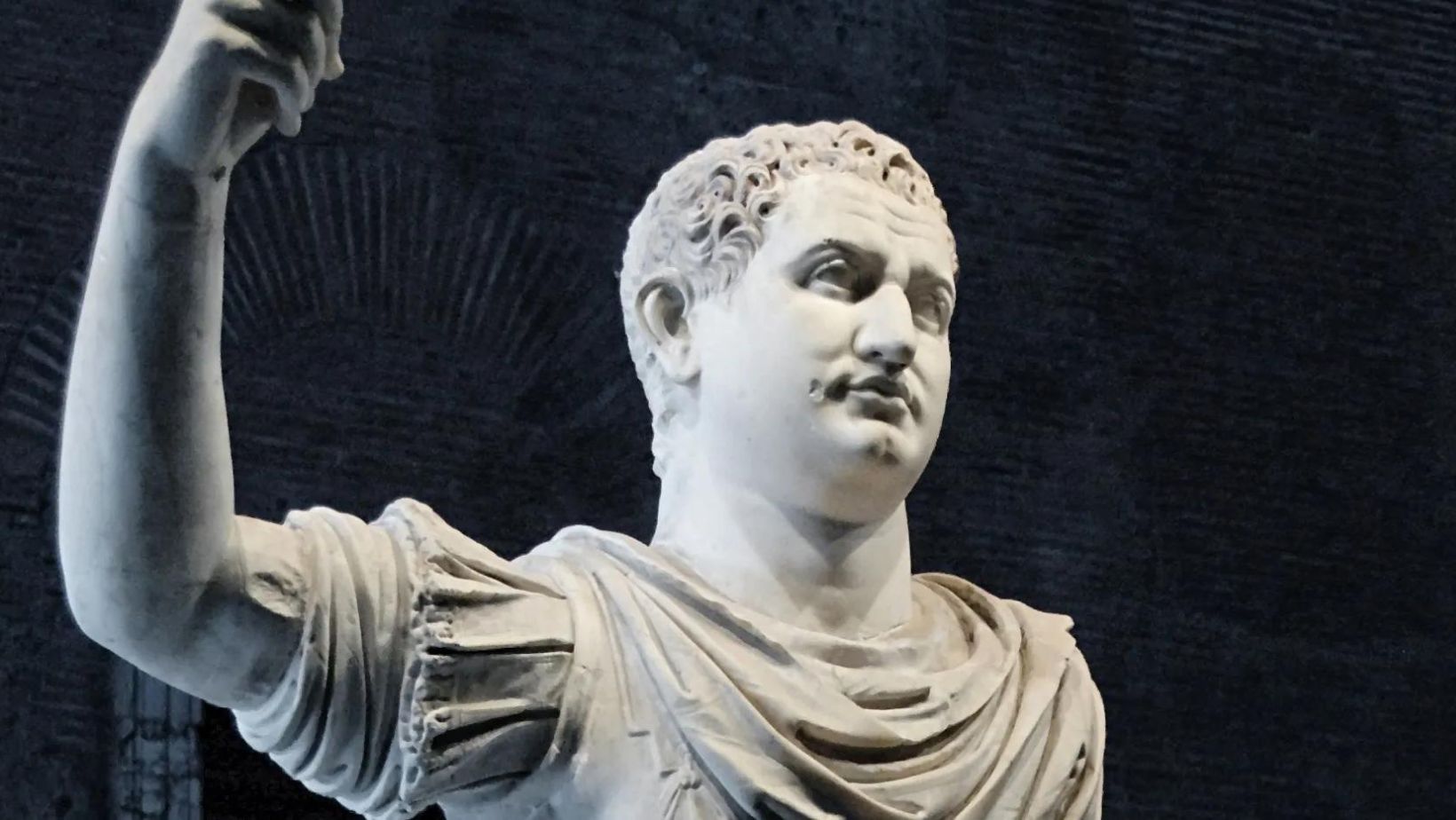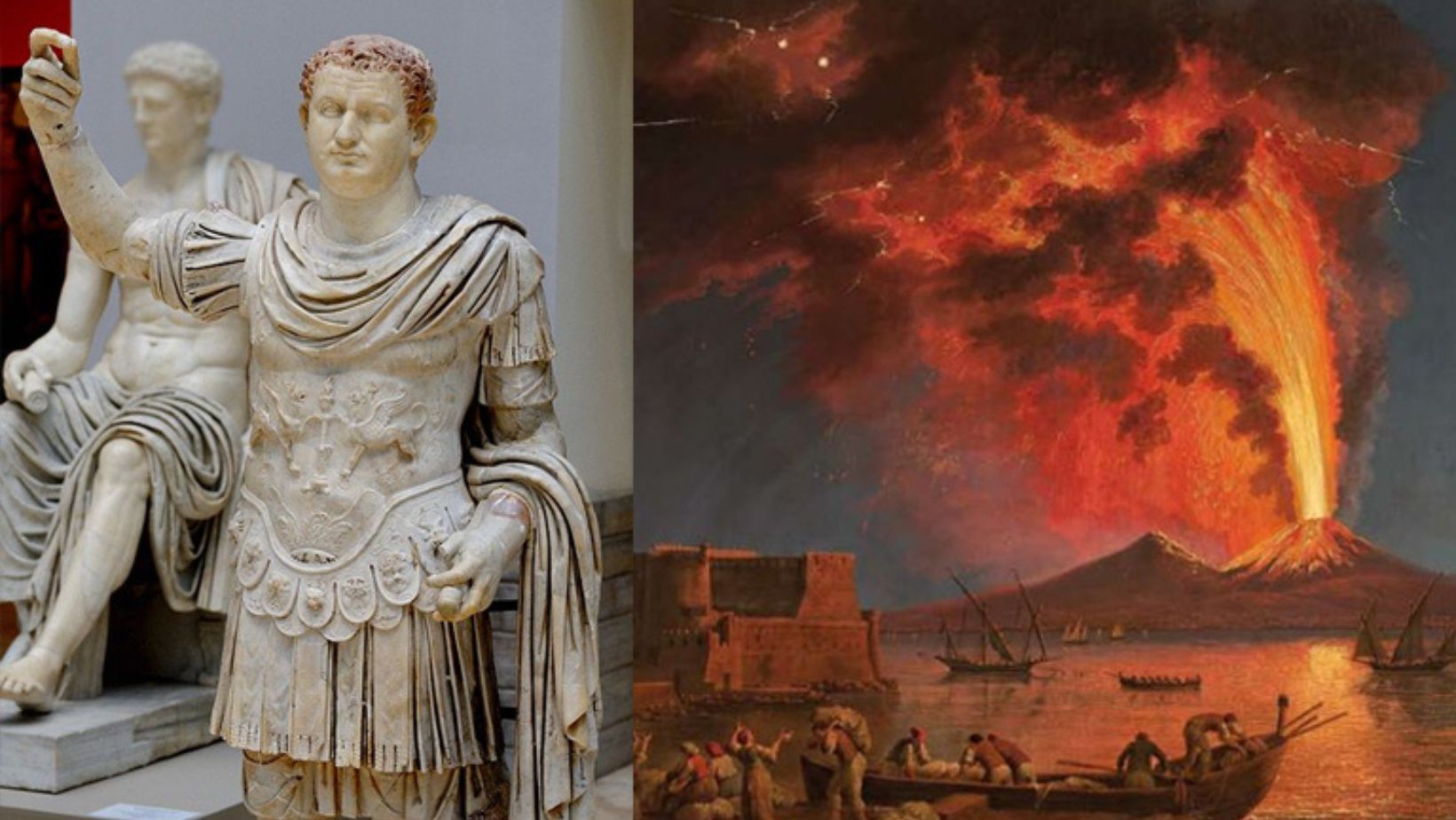When we talk about moments that have shaped our past, few events carry as much weight as Titus and the eruption of Mount Vesuvius. This wasn’t just a tale from ancient textbooks; it was a real-life drama that affected countless lives and reshaped an entire region’s destiny. Imagine being in 79 AD, witnessing one of history’s most explosive volcanic eruptions under Emperor Titus’ rule. It’s almost hard to wrap your head around it, but thousands of lives were lost in a blink, and cities like Pompeii ended up completely covered in ash.
This story isn’t merely about destruction; it’s also a narrative on leadership in times of crisis and humanity’s resilience against nature’s fury. How did Titus respond? Did he play a role in saving lives or providing support to those hit hard by the disaster? Let’s delve into these questions together.
Table of Contents:
- The Reign of Emperor Titus
- The Eruption of Mount Vesuvius in 79 AD
- Titus’ Response to the Disaster
- The Legacy of Titus and the Eruption
- Conclusion
The Reign of Emperor Titus: Titus and the Eruption of Mount Vesuvius

Titus, born Titus Flavius Vespasianus, was a remarkable Roman emperor who left an indelible mark on history during his short reign.
His story is one of military prowess, strong leadership, and compassion in the face of unimaginable tragedy.
Early Life and Military Career: Titus and the Eruption of Mount Vesuvius
Born in 39 AD, Titus was the eldest son of Vespasian, who would later become emperor. Titus received a court education and embarked on a military career, serving as a military tribune in Germania and Britannia.
He demonstrated his military skills during the First Jewish-Roman War, playing a crucial role in the Siege of Jerusalem in 70 AD. His success in this campaign earned him the respect of his troops and the admiration of the Roman people.
Ascension to the Throne
After his father Vespasian’s death in 79 AD, Titus ascended to the throne, becoming the second emperor of the Flavian dynasty. His succession was met with enthusiasm by the Roman people, who had come to admire his military accomplishments and leadership qualities.
In 121 AD, historian Suetonius wrote of Titus Caesar, “Titus, was the delight and darling of the human race; such surpassing ability had he, by nature, art, or good fortune, to win the affections of all men, and that, too, which is no easy task, while he was emperor.”
Accomplishments as Emperor
Despite his short reign of just two years, Titus achieved several notable accomplishments as emperor. His greatest achievement was the completion and opening of the Colosseum, an iconic symbol of Rome that still stands today.
Titus also faced two major disasters during his reign – the eruption of Mount Vesuvius in 79 AD and a devastating fire in Rome in 80 AD. In both cases, he responded with swift action and compassion, aiding the victims and overseeing reconstruction efforts.
The Eruption of Mount Vesuvius in 79 AD: Titus and the Eruption of Mount Vesuvius
The eruption of Mount Vesuvius on August 24, 79 AD, was a catastrophic event that forever changed the landscape of ancient Rome. The volcanic eruption destroyed the cities of Pompeii and Herculaneum, burying them under meters of volcanic ash and pumice.
Pompeii and Herculaneum were thriving Roman cities located near the base of Mount Vesuvius. Pompeii was a bustling commercial center, while Herculaneum was a popular resort town for wealthy Romans.
The eruption caught the inhabitants of these cities by surprise, leaving them little time to escape. The volcanic ash and pumice rained down on the cities, burying buildings, streets, and people under meters of debris.
Eyewitness Accounts of the Eruption: Titus and the Eruption of Mount Vesuvius
One of the most famous eyewitness accounts of the eruption comes from Pliny the Younger, a Roman lawyer and author who witnessed the event from across the Bay of Naples. In a letter to the historian Tacitus, Pliny described the terrifying sight of the eruption:
“Broad sheets of flame were lighting up many parts of Vesuvius; their light and brightness were the more vivid for the darkness of the night… it was daylight now elsewhere in the world, but there the darkness was darker and thicker than any night.”
Destruction and Aftermath
The eruption of Mount Vesuvius released a massive cloud of volcanic ash, pumice, and gas that engulfed the surrounding area. The heat and ash from the eruption carbonized organic matter, preserving the shapes of objects and even people in the hardened ash.
The destruction was immense, with thousands of lives lost and entire cities buried. The eruption also triggered a tsunami that devastated the coastal areas around the Bay of Naples.
Titus’ Response to the Disaster: Titus and the Eruption of Mount Vesuvius
Emperor Titus wasted no time in responding to the disaster caused by the eruption of Mount Vesuvius. He immediately set about organizing relief efforts and providing aid to the survivors.
Organizing Relief Efforts
Titus appointed two former consuls to oversee the relief efforts in the affected areas. He also dispatched the Roman fleet to the Bay of Naples to assist in the evacuation of survivors and the transport of supplies.
According to the ancient historian Suetonius, Titus personally donated large sums of money from the imperial treasury to aid the victims of the eruption.
Titus, emperor from A.D. 79 to 81, sprang into action after news of Vesuvius’s eruption reached Rome. According to ancient biographer Suetonius, Titus “displayed not merely the concern of an emperor but also the deep love of a father, whether by offering messages of sympathy or by giving all the financial help he could.”
Titus ensured that the eruption survivors received the aid and support they needed. He ordered the distribution of food, water, and medical supplies to those who had lost everything in the disaster.
The emperor also provided temporary shelter for those left homeless by the destruction of their cities. He opened public buildings and even his own properties to house the displaced survivors.
Rebuilding Efforts: Titus and the Eruption of Mount Vesuvius
In the aftermath of the eruption, Titus oversaw the rebuilding efforts in the affected areas. He sent teams of engineers and architects to assess the damage and begin the reconstruction process.
The emperor also provided financial support for the rebuilding of homes and public buildings destroyed by the eruption. He exempted the affected cities from paying taxes and offered loans to help them recover.
The Legacy of Titus and the Eruption: Titus and the Eruption of Mount Vesuvius

The reign of Emperor Titus and the eruption of Mount Vesuvius left a lasting impact on Roman history and society. The tragic event and Titus’ compassionate response have been remembered for centuries.
Remembering the Victims
The victims of Mount Vesuvius’s eruption have been memorialized in various ways throughout history. The ruins of Pompeii and Herculaneum serve as poignant reminders of the lives lost in the disaster.
In modern times, the Garden of the Fugitives in Pompeii displays plaster casts of some of the victims, capturing their final moments in haunting detail.
The eruption of Mount Vesuvius and the burial of Pompeii and Herculaneum have provided archaeologists with an unprecedented glimpse into Roman life in the 1st century AD.
The ash and pumice that buried the cities also preserved them, creating a time capsule of Roman art, architecture, and daily life. Excavations of the sites have yielded countless artifacts and insights into Roman society.
Impact on Roman Society: Titus and the Eruption of Mount Vesuvius
The eruption of Mount Vesuvius and Titus’ response to the disaster had a significant impact on Roman society. Titus’ compassion and generosity in the face of tragedy endeared him to the Roman people and solidified his reputation as a caring and effective leader.
The event also served as a reminder of nature’s power and unpredictability and the importance of preparedness and resilience in the face of disaster.
Today, the Arch of Titus in Rome stands as a testament to the emperor’s legacy and his impact on Roman history. The arch, constructed after Titus’ death, commemorates his military victories and his contributions to Roman society.
Key Takeaway: Titus and the Eruption of Mount Vesuvius
Titus shone as a leader, showing real heart and quick action during the Mount Vesuvius eruption. He didn’t just lead; he cared, giving his own money and opening up his homes to help those hit hardest by the tragedy.
The eruption’s aftermath offered a rare peek into Roman life, thanks to Pompeii and Herculaneum being frozen in time. These sites remind us of nature’s might and the importance of community support in tough times.
Conclusion: Titus and the Eruption of Mount Vesuvius
In recounting the saga of Titus and the eruption of Mount Vesuvius, we’ve journeyed through time to witness resilience amidst catastrophe. It stands not only as a testament to natural power but also highlights human strength in facing adversity head-on.
Titus’ role transcends mere historical footnotes – it exemplifies leadership amid despair, showcasing efforts to mitigate suffering despite overwhelming odds. From organizing relief efforts to rebuilding shattered communities, his response set precedents for managing disasters.
We see here not just an emperor caught in dire straits but a reflection on our enduring spirit when faced with calamity—how we rise above ruins to forge paths toward recovery and remembrance.
The legacy left behind prompts us today not simply to recall tales of old but inspires lessons on compassion, governance, and hope amidst darkness—a true chronicle worth revisiting time again for its profound echoes across ages.

